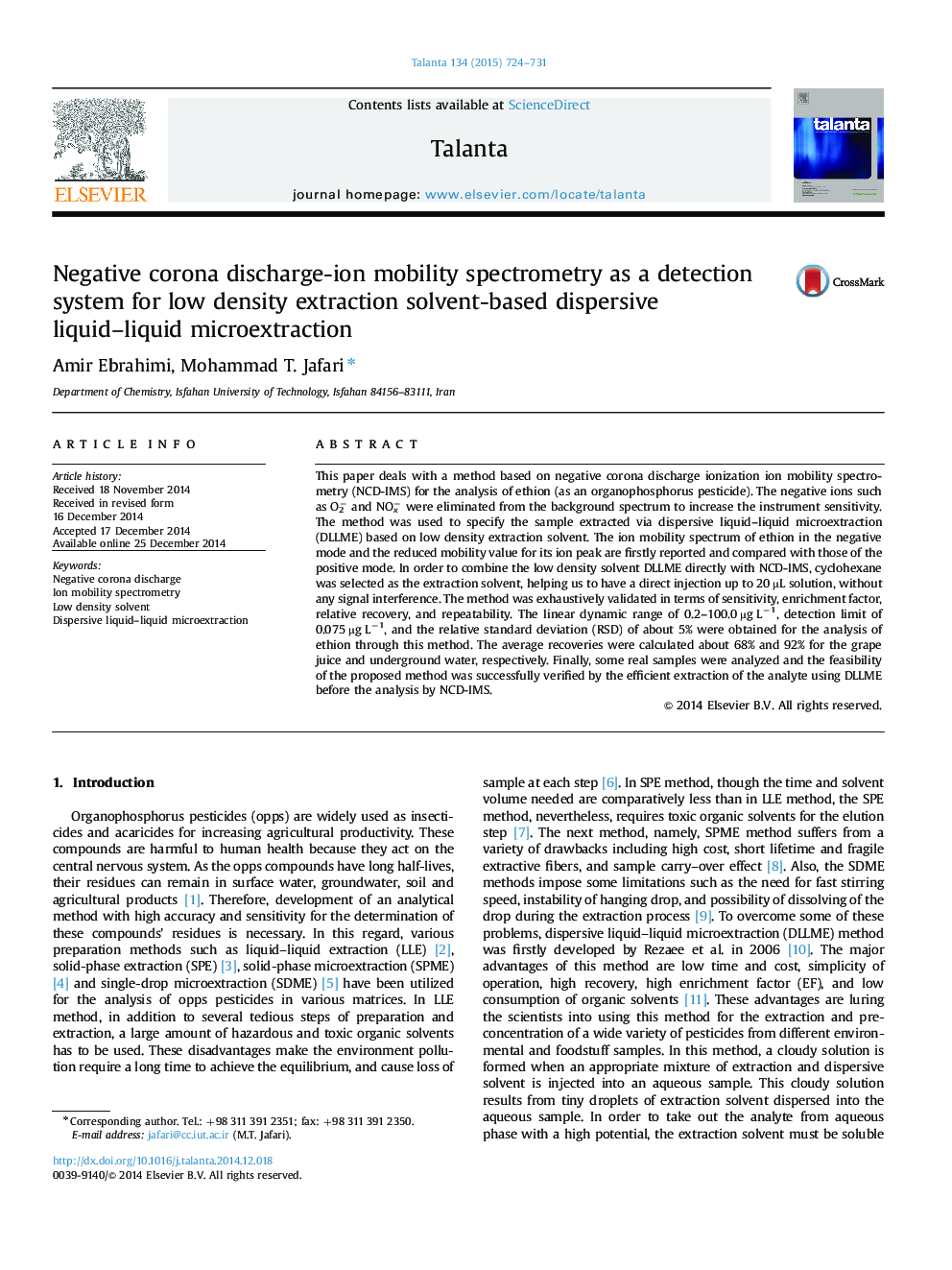| کد مقاله | کد نشریه | سال انتشار | مقاله انگلیسی | نسخه تمام متن |
|---|---|---|---|---|
| 1244139 | 1495801 | 2015 | 8 صفحه PDF | دانلود رایگان |
• Negative corona discharge-IMS was used for analysis of an organophosphorus sample.
• Sample was extracted via low-density solvent dispersive liquid–liquid microextraction.
• Direct analysis of ethion in various real samples was successfully accomplished.
This paper deals with a method based on negative corona discharge ionization ion mobility spectrometry (NCD-IMS) for the analysis of ethion (as an organophosphorus pesticide). The negative ions such as O2− and NOx− were eliminated from the background spectrum to increase the instrument sensitivity. The method was used to specify the sample extracted via dispersive liquid–liquid microextraction (DLLME) based on low density extraction solvent. The ion mobility spectrum of ethion in the negative mode and the reduced mobility value for its ion peak are firstly reported and compared with those of the positive mode. In order to combine the low density solvent DLLME directly with NCD-IMS, cyclohexane was selected as the extraction solvent, helping us to have a direct injection up to 20 µL solution, without any signal interference. The method was exhaustively validated in terms of sensitivity, enrichment factor, relative recovery, and repeatability. The linear dynamic range of 0.2–100.0 µg L−1, detection limit of 0.075 µg L−1, and the relative standard deviation (RSD) of about 5% were obtained for the analysis of ethion through this method. The average recoveries were calculated about 68% and 92% for the grape juice and underground water, respectively. Finally, some real samples were analyzed and the feasibility of the proposed method was successfully verified by the efficient extraction of the analyte using DLLME before the analysis by NCD-IMS.
graphical abstractFigure optionsDownload as PowerPoint slide
Journal: Talanta - Volume 134, 1 March 2015, Pages 724–731
